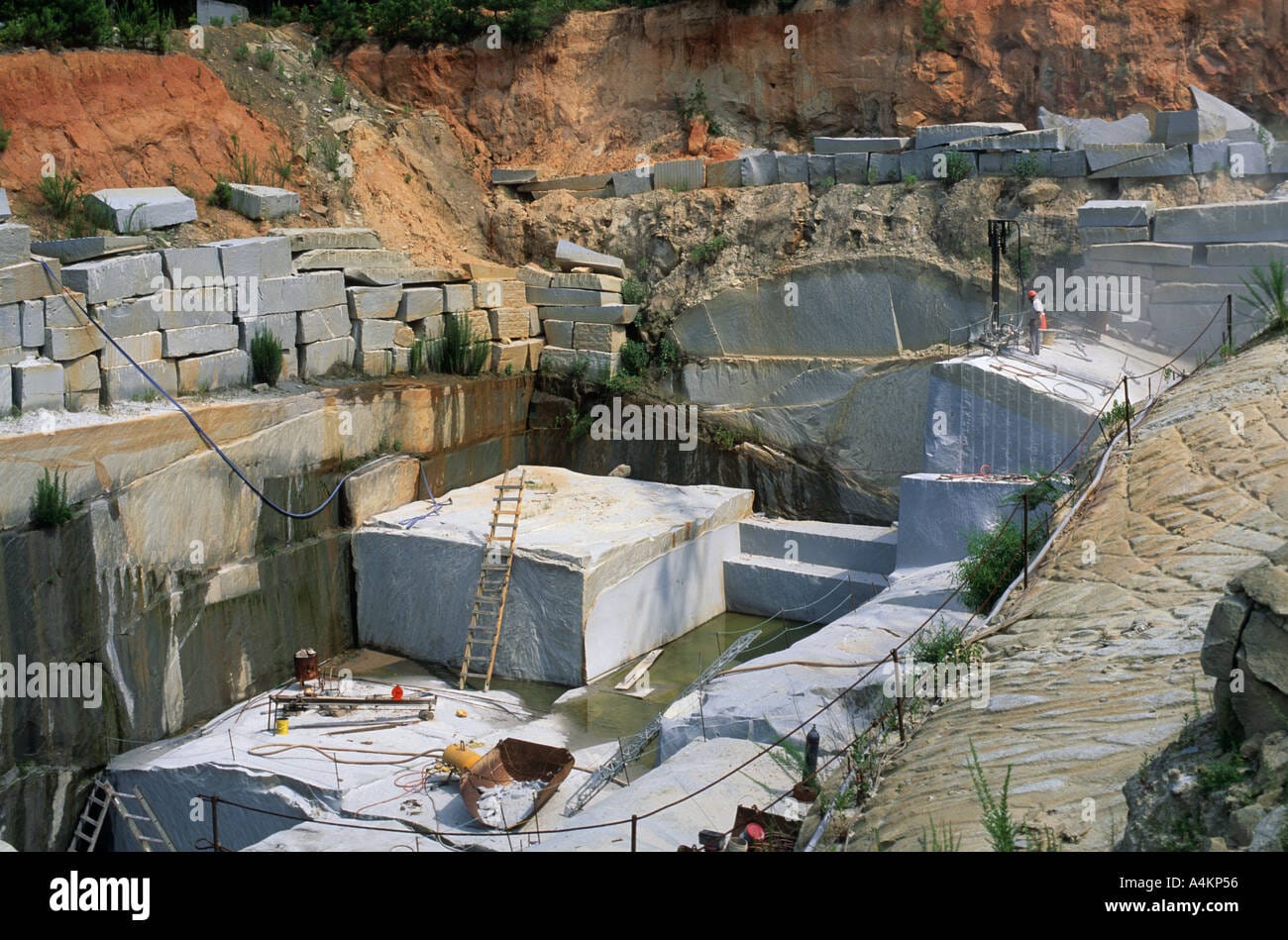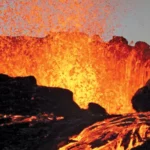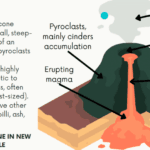Georgia’s not just a pretty face! Beneath its Southern charm lies a secret world of granite—massive blocks ready to be transformed into the buildings and countertops we rely on. Elberton, Georgia, boasts the world’s largest granite quarries, a haven for enthusiasts eager to witness these colossal stone giants. Join us as we delve into Elberton’s quarries and unravel the mysteries surrounding them.
## Granite Mining in Georgia: Exploring Elberton’s Depths
Ever heard of Elberton, Georgia? This unassuming town holds the impressive title of “Granite Capital of the World,” a testament to its abundance of granite mining quarries. Some of these quarries plunge an intriguing 45 feet into the earth, producing an immense supply of this durable and beautiful stone.
But how did Elberton become such a granite giant? The story begins approximately 325 million years ago when massive granite deposits began forming beneath the surface. Imagine a colossal layer of granite stretching over 35 miles long and several miles deep—that’s the scale of Elberton’s granite wealth. These vast deposits are the foundation of the town’s thriving granite industry, a legacy spanning generations.
While the significance of the “45-foot” depth remains unclear, it hints at the varying depths found within Elberton’s quarries. Some are shallower, while others plunge far deeper. This depth directly impacts the quality of the granite extracted. Deeper quarries often yield higher-quality granite with fewer imperfections and less weathering, making it ideal for grand, enduring monuments.
And speaking of monuments, Elberton granite is renowned for its use in these towering structures. But its versatility extends far beyond tributes to history. This remarkable stone graces building facades, adds elegance to countertops, and provides a durable foundation for flooring and infrastructure projects.
Behind every slab of polished granite lies a team of skilled artisans and dedicated quarry workers, the heart and soul of Elberton’s granite industry. Their generations of expertise, passed down through families, ensure that each piece of granite is extracted and shaped with precision and care. These individuals keep traditional techniques alive while embracing new technologies for a safer and more efficient process.
Elberton’s quarries are far from relics of the past. They stand at the forefront of sustainable practices within the industry, constantly seeking ways to minimize their environmental impact. By reducing waste and using resources responsibly, they demonstrate a commitment to preserving the environment. Additionally, cutting-edge technologies like precision cutting and automated machinery make extraction safer and more efficient.
The future of Elberton’s granite industry, like any industry, faces both opportunities and challenges. Evolving design trends, the complexities of globalization, and the constant push for greener technologies will all play a role in shaping its trajectory. However, the enduring beauty, strength, and versatility of Elberton granite ensure that this remarkable stone will remain in high demand. It’s a legacy literally set in stone.
## Unveiling the Depths: Analyzing the World’s Deepest Granite Quarry
We’ve explored granite, its origins, and its diverse applications. But have you ever wondered about the source of all this granite? Enormous pits called quarries are carved into the earth to extract this valuable stone, and some of these quarries reach astonishing depths.
The title of “deepest granite quarry in the world” belongs to the Rock of Ages Quarry, nestled in Graniteville, Vermont. This awe-inspiring quarry plunges almost 600 feet into the earth, equivalent to the height of a 60-story building.
Operational since 1880, the Rock of Ages Quarry has supplied granite for some of the world’s most recognizable structures. That granite countertop in your kitchen or the impressive monument you saw at the park? It could very well have originated from this very quarry.
The quarry’s depth is a testament to the pursuit of quality. Deeper excavations yield larger, more uniform granite blocks, ideal for creating grand monuments and intricate architectural details.
Despite its age and depth, the Rock of Ages Quarry remains active today. Visitors to Vermont can even take guided tours to witness this incredible feat of engineering firsthand.
The future of granite quarries like the Rock of Ages Quarry raises valid concerns about the environmental impact of quarrying. Scientists continue to research alternative materials, and only time will tell what the future holds. However, for now, the Rock of Ages Quarry stands as a monument to human ingenuity and our desire to harness the Earth’s resources.
## How Deep Is a Granite Quarry?
The depth of granite quarries, those man-made craters carved into the earth, varies considerably. They range from relatively shallow excavations to colossal pits that seem to descend into the earth’s core.
While there’s no single answer, most granite quarries reach depths of at least 100 feet. Some quarries, however, can reach depths of 1,000 feet or more, surpassing the height of some skyscrapers.
Consider the Rock of Ages Quarry in Vermont, a colossal pit measuring a staggering 600 feet deep. This quarry is renowned for producing some of the finest granite available, the kind used for grand monuments, impressive buildings, and the durable countertops found in kitchens and bathrooms.
Several factors determine the depth of a quarry. The size of the granite deposit itself plays a significant role, as a larger deposit naturally allows for a deeper quarry. The type of granite being mined also influences depth, as some varieties are found closer to the surface. And of course, mining methods are crucial. Advanced techniques and powerful equipment enable the extraction of granite from greater depths than ever before.
Interestingly, quarry depth isn’t simply about digging straight down. Many quarries utilize “benches,” giant, tiered steps carved into the earth. These benches enhance safety and efficiency during extraction, particularly as the quarry deepens.
The goal is to strike a balance between extracting valuable resources and protecting the environment. Modern quarrying operations prioritize this responsibility, often implementing reclamation plans to restore the land after mining. Environmental regulations help ensure that these operations are conducted sustainably.
The next time you encounter a granite countertop or admire a building adorned with this magnificent stone, take a moment to appreciate its journey. From deep within the earth’s crust to its final destination, it’s a testament to human ingenuity and our ability to utilize the earth’s resources responsibly.
## Unveiling the Secrets of Elberton’s Granite Legacy
Elberton’s reputation as a granite hub is undeniable. But what geological factors led to this abundance of granite? The answer lies millions of years in the past.
Over 325 million years ago, long before dinosaurs roamed the Earth, the area we know as Elberton was a hotbed of geological activity. Deep underground, molten rock, or magma, slowly cooled and hardened over an immense period. This gradual process allowed the minerals within the magma to crystallize and fuse, ultimately forming the massive granite deposits that define Elberton today. These deposits are estimated to sprawl over 35 miles long and plunge several miles deep.
What sets Elberton apart is the accessibility of its granite. In many regions, granite lies buried deep beneath the surface, making extraction costly and challenging. However, Elberton’s granite is relatively close to the surface due to millennia of land shifts and erosion. This geological advantage is a key factor in Elberton’s emergence as a granite powerhouse.
Beyond quantity, Elberton granite is renowned for its quality. It’s incredibly tough, durable, and resistant to harsh weather, heavy wear, and tear. Its beauty is equally compelling, with distinctive patterns and colors that make it suitable for a wide range of applications, from simple sidewalks to towering skyscrapers, and even iconic monuments like the enigmatic Georgia Guidestones.
For over a century, the granite industry has been the lifeblood of Elberton, providing jobs, fueling the local economy, and shaping the city’s identity. Elberton is teeming with quarries and processing plants dedicated to extracting, cutting, and shaping this valuable resource. The industry’s influence extends beyond granite itself, supporting other businesses in the area, such as trucking companies and construction firms.
Today, Elberton proudly holds the title of “Granite Capital of the World.” Its granite is shipped globally, a testament to the enduring legacy of this geological wonder. Elberton’s story exemplifies how the forces of nature, combined with a bit of luck and relentless hard work, can shape the destiny of a place and its people.
**Dive into the fascinating world of ancient Egypt with our exclusive [1970s portfolio history of Tutankhamun](https://www.lolaapp.com/1970s-portfolio-history-of-tutankhamun). Uncover the captivating tale of this iconic pharaoh, his opulent tomb, and the groundbreaking discoveries that continue to captivate minds today.**
- Unveiling the Enigma: Mansoureh Khojasteh Bagherzadeh’s Public Appearances & Private Life in Iran - July 18, 2025
- Unveiling the Mystery: Mansoureh Khojasteh Bagherzadeh’s Husband: A Rare Glimpse into a Private Life - July 18, 2025
- Unveiling Masoud Khamenei’s Mother: Power, Influence, and Iran’s Future - July 18, 2025

















1 thought on “Unearthing Georgia’s Granite Giants: Exploring Quarries and the 45-Foot Enigma”
Comments are closed.